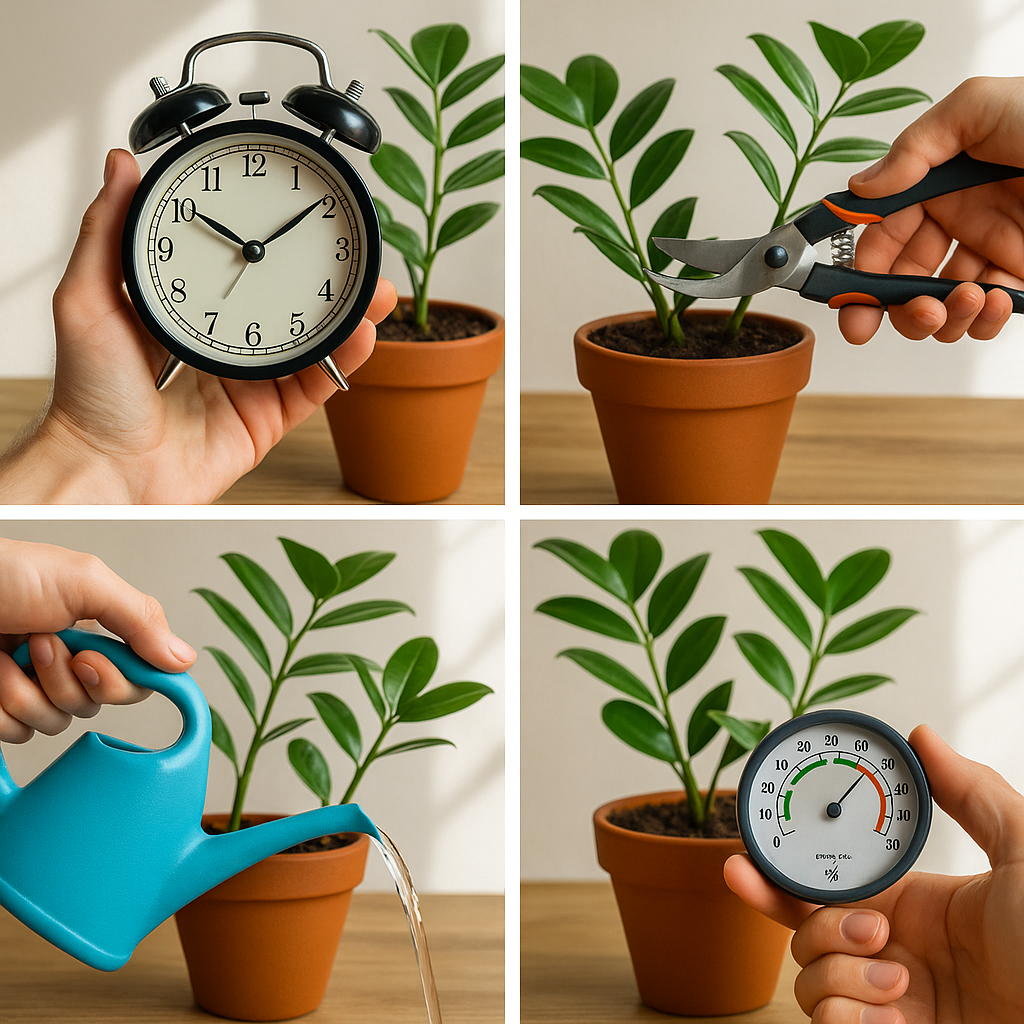A successful plant care routine goes beyond just what you do—it also matters when you do it. Understanding the best times of day to water and tend your plants can significantly impact their health, growth, and resilience. In this article, you’ll learn the optimal timing for common plant care tasks to ensure your plants thrive all year long.
Why Timing Matters in Plant Care
Plants have natural rhythms influenced by light, temperature, and humidity. Performing tasks like watering, pruning, and fertilizing at the wrong time of day can:
- Increase the risk of disease
- Lead to poor water absorption
- Cause stress to roots and leaves
- Reduce the effectiveness of nutrients
Aligning your care routine with plant biology gives your greenery the best chance to flourish.
Best Time of Day to Water Plants
🌱 Early Morning (5 AM – 9 AM): Ideal Time
Why:
- Cooler temperatures reduce water evaporation
- Plants absorb moisture efficiently before the sun is strong
- Leaves dry out quickly, reducing the risk of fungal disease
Avoid: Watering in the evening—cool, damp conditions can encourage mold and root rot.
Best Time to Fertilize
🌤️ Morning or Early Afternoon
Why:
- Plants are active and ready to absorb nutrients
- Daylight helps metabolize the fertilizer
- Prevents leaf burn compared to midday sun exposure
Tip: Always water the soil slightly before applying fertilizer to avoid root damage.
Best Time to Prune
✂️ Late Morning (After Dew Dries)
Why:
- Pruning after dew ensures clean cuts and reduces fungal risks
- Temperatures are stable and healing is faster
- Avoids stressing plants during heat peaks
Exception: Prune flowering plants based on their bloom cycle (after flowering ends).
Best Time to Repot
🌥️ Late Afternoon
Why:
- Plants are less stressed during cooler parts of the day
- Gives them overnight to adjust in lower light
- Reduces water loss during transplanting
Repot on cloudy days or indoors when possible for minimal disruption.
Best Time for General Maintenance
🧽 Morning to Early Afternoon
Tasks like wiping leaves, inspecting for pests, or rotating pots should be done when light is abundant but not too hot. This helps you spot issues early and keeps your plants balanced and healthy.
Key Takeaways
| Task | Best Time | Why |
|---|---|---|
| Watering | Early Morning (5–9 AM) | Best absorption, prevents disease |
| Fertilizing | Morning to Midday | Maximizes nutrient uptake |
| Pruning | Late Morning | Minimizes stress and disease |
| Repotting | Late Afternoon | Reduces shock, better recovery |
| Maintenance | Morning to Afternoon | Good visibility, safer for plants |
Want to bring struggling plants back to life? Check out our guide on How to Revive a Wilted or Sick Plant.

Final Thoughts
Following the best times of day to water and tend your plants can make all the difference between just surviving and truly thriving. When you match your care schedule to your plant’s natural rhythms, you’ll see healthier growth, fewer problems, and more rewarding results. Time it right—and watch your garden thank you.
For optimal plant care, consider using a watering can, pruning shears, or moisture meter—available here on Amazon.
